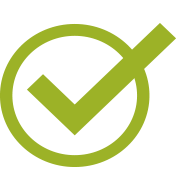Catalog Description
Hours: 77 (44 lecture, 33 laboratory)
Description: Students will acquire basic knowledge and the correct medical language for the functions of procedural and diagnostic coding in the ambulatory medical setting. In addition, students will learn to interpret and locate codes for procedural coding essentials using the CPT (Current Procedural Terminology) and diagnostic coding essentials using the ICD-10-CM (International Classification of Disease, clinical modification 10) manuals. Students will acquire the corresponding medical terminology required for abstracting and interpreting medical charts in order to code with the appropriate manuals. (letter grade only) (not transferable)
Course Student Learning Outcomes
- CSLO #1: Explain the structure of the CPT (Current Procedural Terminology) and ICD-10-CM (International Classification of Diseases, clinical modification 10) manuals.
- CSLO #2: Abstract and interpret medical charts and describe how to locate procedural and diagnostic codes used in the ambulatory setting.
- CSLO #3: Identify the purpose and use of modifiers and the supplemental HCPCS Codes.
- CSLO #4: Convert common words to the equivalent medical term and relate medical terminology to common usage in the health care professions medical coding and charting practices.
- CSLO #5: Interpret and abstract information from patient medical records and other clinical documents while demonstrating correct spelling, pronunciation and usage of medical terms and abbreviations for accurate medical coding.
Effective Term
Fall 2025
Course Type
Credit - Degree-applicable
Contact Hours
77
Outside of Class Hours
88
Total Student Learning Hours
165
Course Objectives
Lecture Objectives:
1. Explain the structure of the CPT (Current Procedural Terminology) and ICD-10-CM (International Classification of Diseases, clinical modification 10) manuals.
2. Illustrate the significance of understanding Medical Terminology in understanding medical charts.
3. Describe how to locate E/M (Evaluation and Management) procedural codes for patient visits.
4. Define when Category II and III codes are used.
5. Describe how to locate procedural and diagnostic codes used in the ambulatory setting.
6. Illustrate the purpose and use of modifiers and the supplemental HCPCS Codes.
Lab Objectives:
1. Distinguish the various steps to coding while using the CPT or ICD-10-CM manuals
2. Apply the elements involved in E/M (Evaluation and Management) coding and locate the proper procedural codes.
3. Explain the difference between Category I, II and III codes.
4. Locate and choose procedural and diagnostics codes using the step-by-step procedure given in each chapter.
5. Describe the process of appending modifiers to codes and the use of supplemental HCPCS codes.
6. Interpret various medical charting formats for best practices of accurate coding.
General Education Information
- Approved College Associate Degree GE Applicability
- CSU GE Applicability (Recommended-requires CSU approval)
- Cal-GETC Applicability (Recommended - Requires External Approval)
- IGETC Applicability (Recommended-requires CSU/UC approval)
Articulation Information
- Not Transferable
Methods of Evaluation
- Objective Examinations
- Example: 1. Students will take a multiple choice test on Procedural Coding. Standard Grading. Exam question example: Which of the following indicates that a procedure was different from the standard description but not in a way that changed the definition or required a different code? a. Add-on codes b. Modifiers c. Co-existing condition d. Expanded codes Answer: b. Modifiers
- Skill Demonstrations
- Example: 1.Students will use physicians’ notes and the CPT manual to locate the correct codes for all procedures done. Then use online publisher tool to enter the codes for each exercise and submit via LMS. Standard Grading. 2.Students will use physicians’ notes and the ICD-10-CM manual to locate the correct codes for all diagnoses given. Then use online publisher tool to enter the codes for each exercise and submit via LMS. Standard Grading.
Repeatable
No
Methods of Instruction
- Laboratory
- Lecture/Discussion
- Distance Learning
Lab:
- Students will use physicians’ notes and the CPT manual to locate the correct codes for all procedures done. Then use online publisher tool software to enter the codes for each exercise and submit for standard grade.
- Students will use physicians’ notes and the ICD-10-CM manual to locate the correct codes for all diagnoses given. Then use online publisher tool to enter the codes for each exercise and submit for standard grade.
Lecture:
- Instructor will present PowerPoint lecture presentations on structure of the CPT (Current Procedural Terminology) manual followed by discussion with students on the correct sequence used for locating CPT codes.
- Instructor will present PowerPoint lecture presentations on structure of the ICD-10-CM (International Classifications of Diseases, clinical modification 10) manual followed by discussion with students on the correct sequence used for locating ICD-10-CM codes.
Distance Learning
- Instructor will provide an example of abstracting the correct Procedure, Service and Treatment performed by a provider as as discussed in online lecture and practiced in lab. This exercise will illustrate their understanding of the process of medical coding with the ICD-10 and CPT medical language coding system and well as abstracting and interpreting medical providers' Chart/SOAP notes.
- Students will complete the exercises online, and submit via LMS Discussion board platform. Instructor will review the medical codes for accuracy, provide feedback on the accuracy of students examples as well as their explanation of the process in their interaction with peers to illustrate the students understanding of medical coding and medical chart interpretation.
- Each student an opportunity to tie together and create their own examples of medical charting of clinical procedure, service and treatment. Then the students will analyze, interpret, and discuss with one another how they developed the process of finding the correct medical code. Example: As procedure codes are for "procedures, services, and treatments" give at least 1 example per each. Procedure: Removing a mole Service: Discussing test results with a patient Treatment: Chemotherapy topical cream Then: Explain to a new team member how you abstract procedure codes from a Providers' SOAP Note
Typical Out of Class Assignments
Reading Assignments
1. Read section on Modifiers in the textbook and be prepared to discuss how they apply to CPT codes. 2. Read section in the textbook on HCPCS regarding connection with CPT codes and be prepared to discuss.
Writing, Problem Solving or Performance
1. Written critical thinking exercises on modifiers. Ex:When would it be appropriate to use modifiers. 2. Written critical thinking exercises on HCPCS. Ex: Answer the question: When might Codes not found in the CPT manual be found in the HCPCS manual?
Other (Term projects, research papers, portfolios, etc.)
Required Materials
- Buck's Step by Step Medical Coding 2024
- Author: Koesterman, Jackie
- Publisher: Elsevier
- Publication Date: Nov 20, 2023
- Text Edition: 1st ed
- Classic Textbook?:
- OER Link:
- OER:
- Kinn's The Medical Assistant: an Applied Learning Approach
- Author: Brigitte Niedzwiecki and Julie Pepper
- Publisher: Elsevier
- Publication Date: 2023
- Text Edition: 15th
- Classic Textbook?:
- OER Link:
- OER:


